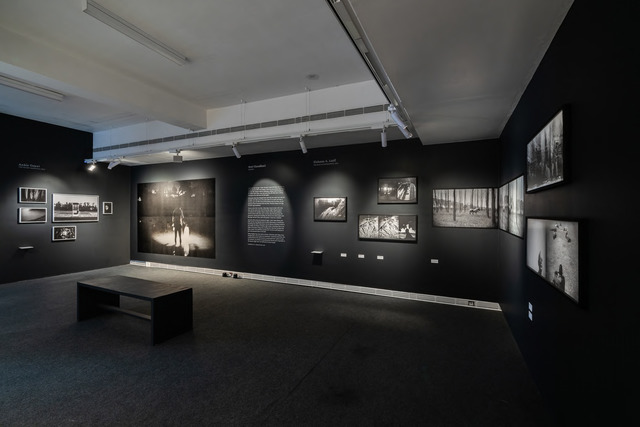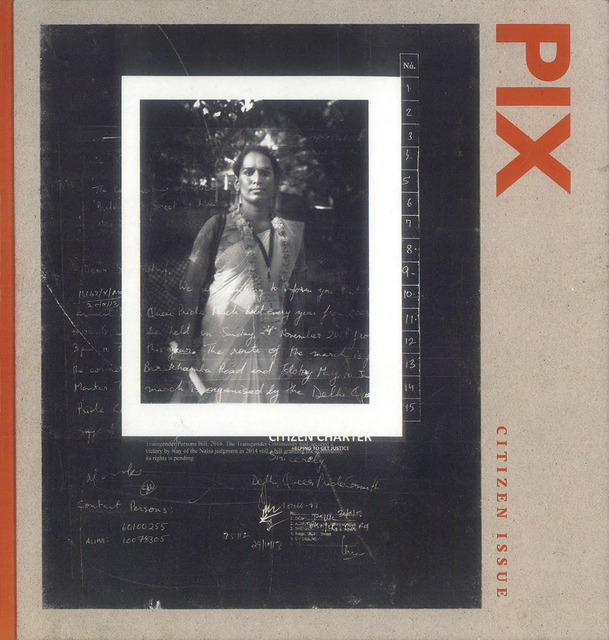PIX: Photography and Critical Thought in South Asia
Skip other details (including permanent urls, DOI, citation information)
: This work is licensed under a Creative Commons Attribution-NonCommercial-NoDerivatives 4.0 International License. Please contact [email protected] to use this work in a way not covered by the license.
For more information, read Michigan Publishing's access and usage policy.
PIX was established in 2010/11 with a photo-editorial team in an attempt to question the needs and interests of South Asian photo practitioners amid formal and pedagogical changes in the field of visual arts. During the last decade, we have produced publications and exhibitions and conducted seminars in almost all South Asian countries, based on themes that were generated after discussions in the region. We have produced seventeen issues, two newsletters, and a commercial publication, and initiated a blog on photography/lens-based practice, and collectively curated over 20 exhibitions in and outside S. Asia. We are meant to be an incubator for ideas. PIX was primarily initiated with and funded by the Goethe Institut/Max Mueller Bhavan in India, for many years, but subsequently also received support from other cultural institutions, such as Pro Helvetia (the Swiss Arts Council), the Japan Foundation, and the Institut Français en Inde together with private arts institutions like the Gujral Foundation and the Raza Foundation, as well as inter-governmental grants. Our next issue is supported by the MurthiNayak Foundation (Baltimore/Bangalore). All of PIX’s activities are available to view online at www.enterpix.in.
Over the last seventeen issues, I, as the founding/managing editor, with an esteemed photo editorial team and freelancing interns have been keen on exploring how literary pieces and photography, published together, could help us understand how images negotiate not only the past and present but also regional histories, through notions of voice and agency. PIX’s goal, to my mind, has been to interact with historians, anthropologists, critics, fiction writers, poets and image makers through short commissioned pieces — the authors would illuminate the images with their interpretative scope, while the artists would conjecture beyond the written word. It was always meant to be interactive and inter-reactive.
[Figure redacted]
The team today consists of Nandita Jaishankar, previously an editor but now associated with Serendipity Arts Foundation, one of the largest arts initiatives in India; Tanvi Mishra, a photographer and the creative director of The Caravan magazine; Philippe Calia, a lens-based artist and founder of a forum called BIND; and Akshay Mahajan, an independent practitioner and curator. We are also grateful to have an associate member, Anisha Baid, an artist from the Srishti School; a designer and colleague, Sukanya Baskar, the lead designer of our recent issues, currently doing a course in Curating from Bard, and Zainab Mufti, an intern who has devoted her time to practical experience while finishing her Bachelors in journalism from Kashmir. Our other colleagues have included designers Arati Devasher and Misha Oberoi; members from the LUCIDA Collective; printmaker Kaushik Ramaswamy; and writer/researcher Arnav Adhikari.
In shaping each issue that PIX produces, our goal, I feel, is to explore an alternative archive of contemporary practice. We receive a vast amount of material that is present but rarely seen, invited through an open call. The photo editorial group, in conjunction with an advisory team or member from the guest country if, indeed the theme of the issue is about a specific country, makes its selection. We are interested in practitioners outside the ‘mainstream’ whose work needs to be acknowledged. This perspective has shifted of its own as many previously featured practitioners have astounding careers of their own. We are grateful to them.
 Fig. 3. Exhibition view: Ellipsis: Between Word and Image, section highlighting featured artists from PIX, Jawahar Kala Kendra, February- May 2019, Jaipur. Courtesy of Philippe Calia and Srinivas Kuruganti.
Fig. 3. Exhibition view: Ellipsis: Between Word and Image, section highlighting featured artists from PIX, Jawahar Kala Kendra, February- May 2019, Jaipur. Courtesy of Philippe Calia and Srinivas Kuruganti.But there have been many challenges along the way. In the exposition of works in the PIX issue related to the Sri Lankan civil war, which ended in 2009, contributors address the postcolonial era and announce a vital probing of the lens into hidden, violent and volatile histories over time. In another example, in the works of Azadeh Akhlaghi and Amber Hammad, featured in the issues relating to Iran and Pakistan, respectively, photography challenges how documents of the past could make us think about how to volunteer new media exchanges in the present through the staged and the morphed image. These works make us consider whether, in fact, the language of photography is a universal one.
PIX, through the Student Issue, which was launched two years ago out of an interest in the larger resonance and place of pedagogy in South Asia, tries to investigate curatorial and educational structures that exist at the macro and micro levels — state-funded institutions as well as individual, private initiatives — and how they condition a practitioner’s methodology.
When we come to the question of an audience, I think we are looking, to begin with, at striving practitioners who could gain from an expanded critical field and at how the general public could be exposed to emerging practices. This also brings into focus the importance of the viewer as participant, as almost all our publications have been made into exhibitions, prefigured by talks or debates. Viewer participation, as feedback, is then generative in the process of editing and selection as the photo editorial team has an expanded perspective through their own exposures in varied public fora. The interest we may garner and reception we receive mandate our next steps; they also condition the endorsement we receive through cultural benefactions from various institutions.
 Fig. 5. Exhibition view: Ellipsis: Between Word and Image, section highlighting featured artists from PIX, Jawahar Kala Kendra, February- May 2019, Jaipur. Courtesy of Philippe Calia and Srinivas Kuruganti.
Fig. 5. Exhibition view: Ellipsis: Between Word and Image, section highlighting featured artists from PIX, Jawahar Kala Kendra, February- May 2019, Jaipur. Courtesy of Philippe Calia and Srinivas Kuruganti.I think both online and paper publications have their place, and we do both. I greatly appreciate printed matter but realize that it has consequences in the long run; there should be new ways to manufacture from renewable sources that can perhaps change the equation for sustainability over time. Online in South Asia has its limits, too: Access to the Internet is sometimes curtailed. Together, though, I think they can enhance our collective experience of appreciating lens-based work.
Currently, personal-disclosure projects and their elided histories have become an important conceptual ground to think about how art and the documentary are part of each other’s worlds. Our next issue (summer 2020), titled Personal Paradigms, will look at family histories as well as individual perspectives around found material — on the question of external affiliation and belonging, on tangible links to collective histories and identities, on the evidentiary potential of memory, and on the meaning of self-representation and its intimacies.
Rahaab Allana is Curator, Alkazi Foundation for the Arts in New Delhi; Fellow of the Royal Asiatic Society (London) and Honorary Research Associate at the University College, London. He has curated, contributed to and edited several publications and exhibitions on South Asian photography and its trans-national histories, working with museums, universities, festivals and other arts initiatives. He is the Founding/Managing Editor of PIX, one of India’s first theme-based photography publications.




